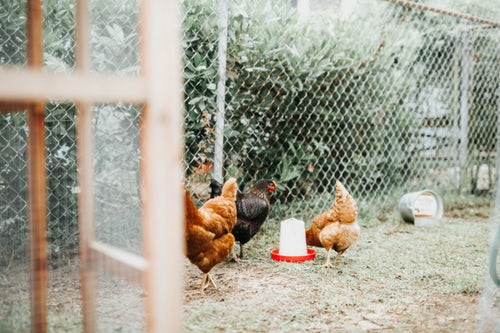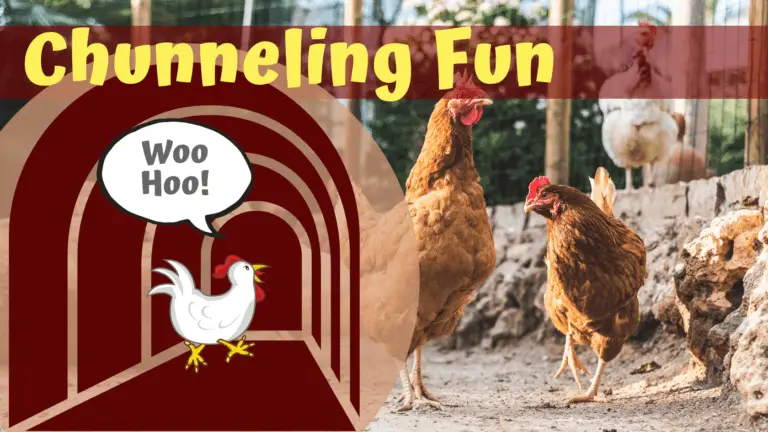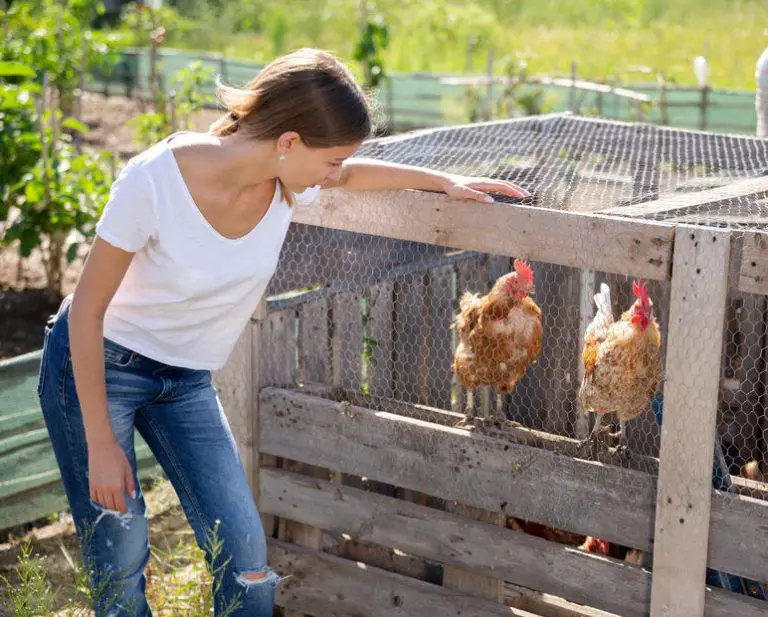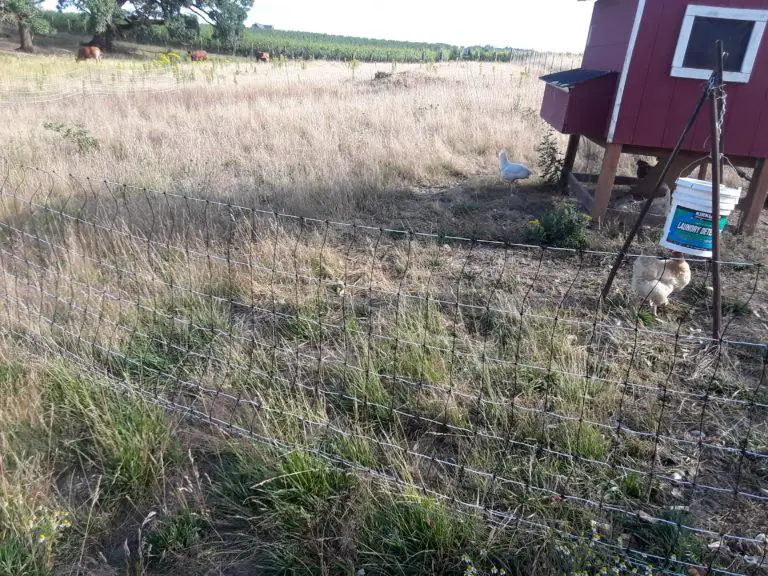Chicken Coop Runs – To Build Or Buy, You Decide
Having a great coop for your flock is a no brainer – they need shelter, a place to stay out of the rain, protection from predators etc. But giving your chickens a place to roam around makes a big difference in their overall happiness as well.
If you have chickens, you already know how entertaining it is to watch them scratch at the ground, eating bugs, seeds, or whatever catches their eye. By providing your flock with access to fresh air, exploration, exercise, and a way to satisfy their natural yearnings to scratch and pick at the ground, you have fulfilled in them a great need.
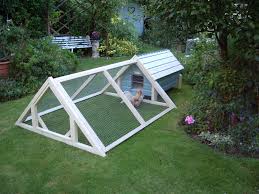
(photo, wikimedia commons)
But depending on where you live and how much space you have, finding a suitable place like this can be difficult. Some people like their chickens to free range anywhere they want all through the day, and return to the coop at night.
This is awesome if you can get away with it and your birds don’t end up going all over the neighborhood, pooping on a neighbor’s lawn or front porch or, worse yet, getting eaten or chased by a predator!
We live in the country and like to have our flock free range during the day. We’ve done this for years but unfortunately have lost some of our birds to predators like hawks during the day, owls at night. So a good run attached to the coop would have prevented this.
What Is A Run?
Just in case it wasn’t obvious, a Run is an outdoor enclosure either by itself or connected to your coop that safely provides an area for your chickens to play and eat. It’s not often covered but sometimes it is, especially if you have aerial predators in your area that could otherwise swoop in to nab your chickens.
Most runs are made of some type of wire mesh or synthetic mesh material designed to keep your chickens in and the predators out.
Should I Use A Run Or Let Them Free Range?
I’ve been raising chickens for well over 15 years now and I’ve let them free range, and have also had them in a run…here is what I discovered about each arrangement:
Free Range
I have used a run before and always felt like I was depriving my chickens of full freedom to run around in our pasture. We live in the country and have an area of pasture plenty big for them to romp around in so I decided to let mine free range.
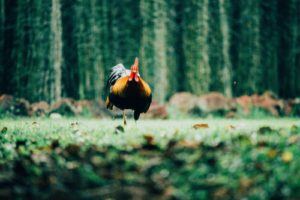
(photo by Chuttersnap, Unsplash)
I knew there were risks of losing them to predators, both aerial and ground predators, but thought it may still be worth the risk for the quality of life they would have. Not only that, it was less maintenance for me!
I did end up losing a handful of chickens over the years to aerial predators this way, but very few. However, if I lived in a more remote area where cougars, coyotes (and the like) were present, I’d have kept them in a run due to a much greater likelihood of an attack against the flock.
Electric Netting can also be used as a way to contain your chickens to one area, and it can be cheaper than buying a run.
Having A Run
Next to free ranging, a good solid run provides plenty of safe space for your chickens to run wild without losing them to predators. Sure they don’t get to run EVERYWHERE but they’ll be happy digging and poking around in however much space can be provided for them.
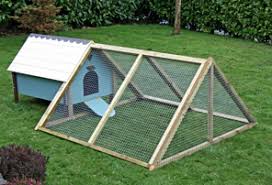
(photo, wikimedia)
Not only that, a run keeps them from poking around in areas they shouldn’t be – like your nice porch…or car hood…or leaving fresh droppings on your neighbors lawn.
I’m sure you see my point. If given room to wander, they’ll take advantage of it. They will also fly over fences if they aren’t tall enough or if there is a wide enough space for them to fit through.
So a run eliminates the above issues and allows you peace of mind that your birds are safe and not stirring up trouble.
Many people make the run interesting by adding a few tasty dried worms, bugs, veggie scraps etc. Others have added a deep layer of dry dirt in one area of the run where they can take a dust bath. All of these things and more can make the run a fun yet safe space for your flock to hang out.
How Much Space Is Needed In A Run?
The amount of space needed in a coop is different than what’s needed for a run. To estimate the square footage needed in a run, figure 8-10 square feet per chicken (vs 3-4 sf/chicken in a coop). So, for example, if you have 4 chickens, your run space should be 30 – 40 square feet…and some possible layouts could be a 5 ft x 7 ft base, which would equal 35 sf.
To determine the square footage, it’s simply multiplying the dimensions so in this case 5 X 7 = 35. Easy! Or a few more examples…6 ft x 6 ft to total 36 sf, Or 8 x 5 to make 40 sf. I think you get the picture. Any of these dimensions would fall in the 30 sf to 40 sf range to nicely hold 4 chickens.
For more information about this and for designing your coop, see this article.
Height Of A Run?
It’d be great for the chickens to make it at least tall enough for them to fly around a bit so at least 4 ft high is awesome. When I made my run, I made it around 6 ft high so they could fly a bit higher.
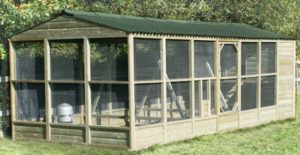
However, there are no hard and fast rules here – it’s really up to you. If you’re making the run yourself, it may involve more materials to make a taller run, but the higher it is, the more freedom they have to fly around.
However, I’ll include what others have said which is to have a run no taller than 2 ft so they (the owners) can step over the run. Not only that, it’s lighter and less bulky to move around that way.
So really it’s up to your own personal preference on this one. The birds will simply enjoy being outside either way!
Cool Video Of Making A PVC Chicken Run!
Should A Run Be Covered Or Uncovered?
This will depend a lot on whether you have aerial predators or plan on clipping their wings. If you don’t have any problems with Owls, Hawks, Eagles etc. you may be fine not have a top on your run. However, if you know of others raising chickens in your area who have spotted these aerial predators, it would be a smart idea to put forth the added work and expense by adding a covering of some sort to keep them out.
Also – if you don’t plan to clip one of the wings of your chickens (which makes them unable to take flight), then you’ll want a top on it as well. For a simple tutorial on safely clipping chicken wings, see this article.
If covered, what type of “roof” or top should I use?
Since the run is not your coop where the birds will sleep at night, it doesn’t necessarily have to be covered. But some chicken farmers do want their run covered as it keeps the elements out. In this case, a solid roof made of metal, wood, asphalt may be great.

If you live in a wet climate, it can get pretty muddy in the run if not covered so a roof can be nice. However, it’s not a necessity if enough bedding like wood chips etc. is added during the wetter months of the year.
If you don’t care about the elements getting in your run, but are primarily concerned about aerial predators, you can simply added a wire or synthetic mesh over the top of the run to keep them away from your flock.
If you decide you DON’T need a top at all, it’d be a good idea to make the perimeter of the run at least 5 ft high and clip one wing of each of your chickens so they don’t attempt to fly out.
Also – check to make sure the openings in the sides of the fencing are small enough for them to squeeze through. We have basic woven wire fencing and they can squeeze through the larger holes of this type of farm fencing so we had to add some additional wire strands over these areas to keep them out.
What Materials Are Runs Made Of?
The run is often made of wood framing with wire mesh stapled or nailed over the framing. But there are many different materials that can be used such as PVC framing with a tarp top and synthetic mesh sides work, metal framing with plastic top and wire mesh sides, a dog run works great, or whatever creative ideas come to your mind!
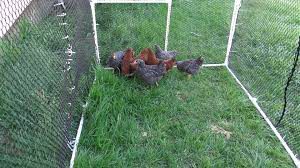
(Photo, Pixabay)
A fairly affordable yet sturdy design is to use 2 x 2 or 2×4 framing lumber for the supports with wire mesh on the sides. It’s a rather simple yet solid design and your chickens will be going no where! We recommend a design like this because they can easily be made at home, or you can also buy them online if you prefer.
Should I Buy Or Build A Run?
This is, of course, completely up to you. A run is not as difficult a structure to build as other structures like a chicken coop. But that’s not to say it doesn’t come with its own level of difficulty. If you’re handy…or even if you’re not but you can use some basic tools like a saw, hammer, and stapler, you can make your own!
We’ve made our own run in the past by attaching it to our coop as an add-on, and it was a lot of fun. We used 2×4 wood framing with hardware cloth siding stapled on and it worked great. We added a door as well so we could also get in the run with them, but that’s optional.
Some cool plans for a run can be found here.
However, if you don’t want to go through the effort and simply want to buy one that’s either preassembled or can be purchased as a kit you order online and put together yourself, click here. There are dozens of options available, some of which are heavy duty, others that are lighter and easier to work with, and still others that are portable and can easily be taken down if needed.

(photo, George Walker, Unsplash)
Final Thoughts
I hope you found the information you needed to either build or buy a run for your chickens. As co
st goes, it’s not generally as expensive as buying or building a chicken coop. Not only that, it’ll provide your flock a fun place to root around without getting eaten!
Please leave a comment below if you have experience building or buying a run of your own. We can all learn from each other here! Thanks for stopping by.

